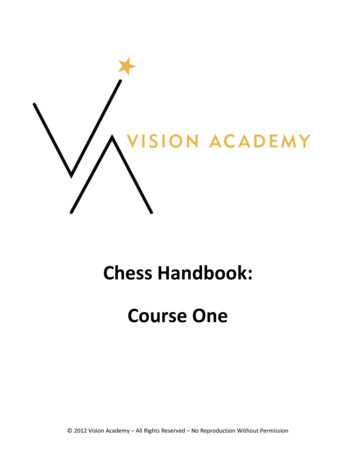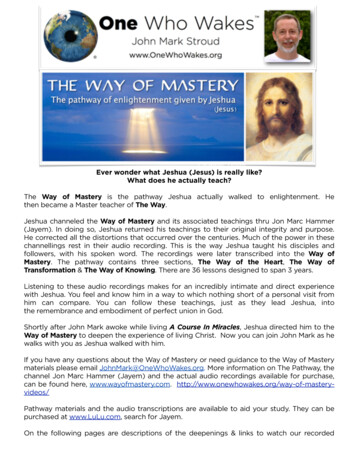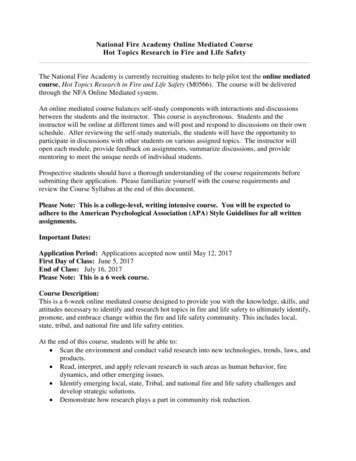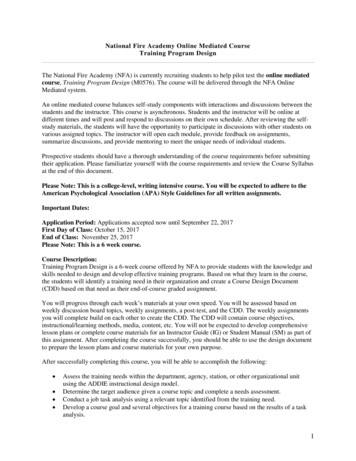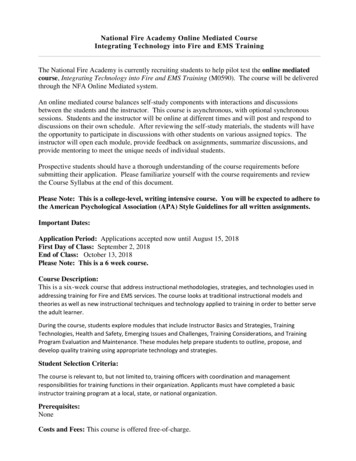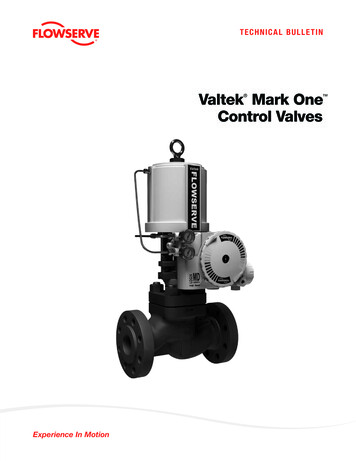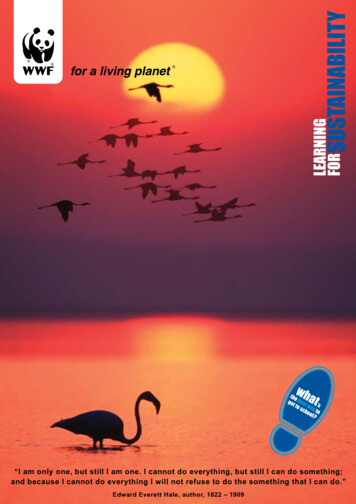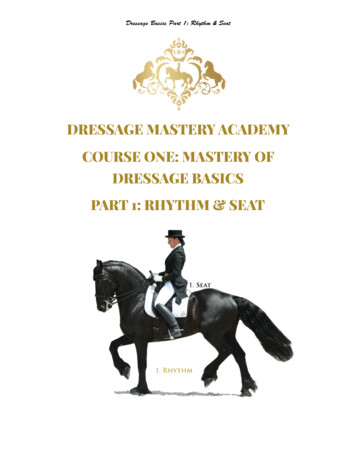
Transcription
Dressage Basics Part 1: Rhythm & SeatDRESSAGE MASTERY ACADEMYCOURSE ONE: MASTERY OFDRESSAGE BASICSPART 1: RHYTHM & SEAT
Dressage Mastery Academy: Mastery of Dressage BasicsDRESSAGE MASTERY ACADEMYCOURSE 1: MASTERY OF DRESSAGE BASICSINDEXIntroduction to Dressage Mastery Academy Page 2-7Section 1: Rhythm . Page 81. Information on Rhythm . . . Page 82. Questions to consolidate learning on Rhythm . Page 9-103. Checklist for Rhythm . Page 114. Troubleshooting Guide . . Page 12-145. Answer Sheet . Page 15-16Section 2: Seat . Page 171. Information on Seat . Page 17-222. Questions to consolidate learning . Page 23-243. Checklist for Seat Page 254. Troubleshooting Guide . Page 26-295. Answer Sheet . Page 30Section 3: Training Plans Page 311. Introduction to training plans (what is a training plan?) . Page 31-322. Training Plan Goals . Page 33-343. Week 1 . Page 35-374. Week 2 . Page 38-415. Week 3 Page 42-456. Week 4 Page 46-47!1
Dressage Mastery Academy: Mastery of Dressage BasicsWelcome to Dressage Mastery Academy!I am so excited that you have decided to come on this magical, magnificent amazingjourney that we call dressage.I really acknowledge you - a big pat on the back - dressage isn’t easy. There is lots tolearn, lots to master - I find it a very humbling intriguing way to spend my time!I am a definitely a different person today than I was 10 years ago because of what dressagehas taught me, but also the person I had to become - I learnt patience, sacrifice and hardwork from mastering dressage.I know when I was learning how to ride and deciding to become a dressage rider, it wasn’teasy, and at most times it was very frustrating, very isolating - I felt very alone, confusedpretty much all of the time. I didn’t know what I was doing and how to do it - I didn’t wantto ride unless my coach was there telling me I wasn’t stuffing up the horse. there was somuch uncertainty around everything in my riding!So what I decided after this journey, was that I really want to record a step by step easy tofollow, system that could help riders who are in the same situation as I was when I startedout. To help them on their dressage journey, and short circuit some of the steps to learningdressage, and not make all the mistakes that I did.I wanted to create a program that is designed to give you everything in easy to understandsteps so that you know what you should be doing and when you should be doing it. To giveyou that trust and certainty in yourself. That you might not have all the answers, but youmight not know exactly how to do it - but that’s ok and to trust in yourself and have funwhile you are doing it.I could have had a whole lot more fun than what I did because I was so serious andconcentrating so much all the time on getting it right! Now I LOVE riding, I LOVEdressage and I LOVE training my horses - it’s a lot more light and a lot more fun! I wantto give you that gift straight away on your dressage journey.This program is everything I have learnt, everything I have mastered in the last 20 years,packaged in one easy to use system that you can start from the very basics of dressage allthe way to Grand Prix.You can pause this program at any time - perhaps you are going away, your horse getsinjured, or you need a bit more time to catch up on everything that you have received sofar - it is a very flexible program that takes you at your own pace.This journey will take you from Basics - Preliminary (Training Level) - Novice (Level 1) Elementary (Level 2) - Medium (Level 3) - Advanced (Level 4) - Prix St Georges Intermediate I - Intermediate II - Grand Prix. right to the top!!2
Dressage Mastery Academy: Mastery of Dressage BasicsThat’s where we are heading, that’s what this journey is all about!! I always follow theprinciple that you start with the end in mind. so you now have a clear path and you knowwhat the end goal is that we are looking to achieve.The German Training Scale is what the program is based on. If you don’t know what theGerman Training Scale is - this is a very famous system that they use to train dressagehorses in Europe.This scale is intertwined with the Rider’s Success Scale that I have developed, based onwhat I believe riders need to learn, develop and master for them to be the riders that theyneed to be to be able to train the horse in the German Training System.On the following pages I will give you a brief outline of the two different scales and howthey relate and intertwine with each other.!3
Dressage Mastery Academy: Mastery of Dressage BasicsIn the German Training Scale, the first two levels are Rhythm and Losgellasenheit.1. RHYTHM2. LOSGELASSENHEIT - this is roughly translated to relaxation.These two steps are the first things that we work on when we first get on a horse. Theseare the first two steps we need in order to make everything else work, and the things thatwe go back to if something is not working well with the horse.The horse needs to be in a nice forward rhythm and it needs to be relaxed!!4
Dressage Mastery Academy: Mastery of Dressage BasicsYou need to make sure when you are training the higher movements that you are nottraining these movements by sacrificing Rhythm and Losgelassenheit - because they arereally important!When we are looking at comparing these first two steps of the German Training Scale tothe Rider Success Scale, the two things we need are:1. SEAT2. MINDSETWe simply must have an independent SEAT. We must be able to sit on the horse and movewith the horse independently of what is going on. If we are not in balance, then how canwe expect the horse to be balanced? We need to develop balance, and we need to learn howto go with the horse.MINDSET is also incredibly important when we are riding and training dressage horses.Who do we need to be as a rider to be able to deliver and train a horse effectively indressage?Then we can move into the next two levels of the German Training Scale:3. CONTACT4. IMPULSIONContact is really important - we have to be able to maintain a contact with the horsesmouth.On the Rider Success Scale, contact is also very important.3. CONTACTWe must be able to keep contact and not drop our hands, drop our contact, or if we are stillusing our hands for balance and jerking the horse every stride, then how can the horsekeep a steady contact if we can’t keep a steady contact.This is where the German Training Scale and the Rider Success Scale really intertwine andwork hand in hand. The horse can’t be in a nice contact if we as riders can’t first maintaina contact.!5
Dressage Mastery Academy: Mastery of Dressage BasicsImpulsion is also really important in the German Training Scale. But what is impulsionand how is that created?If you look at the Rider Success Scale for the answer, we come to transitions.4. TRANSITIONSImpulsion is created through transitions between the gaits (eg. trot-canter) and within thegaits (eg. collected canter-medium canter). All these things will start to create the horsemoving onto a horizontal plane - from traveling on the forehand to getting those hindlegs abit more active and start to carry the horse a bit more.The last two steps are really about getting the horse to sit on the hindlegs.So on the German Training Scale we have:5. STRAIGHTNESS6. COLLECTIONStraightness is hugely important - horses are not born straight - they have a preference towhich side they prefer. We also ride with a preference to one side or the other that we alsoalways need to work on.We want to make the horse more supple and more soft on both sides so they can beabsolutely straight.When you look at the Rider Success Scale, this is the ability to move the horse.5. YIELDINGThis is the ability to put the horses hindleg, or the horses shoulder - every part of the horse- front or back legs, you want to be able to move in any way to create straightness. Eg. ifthe horse is carrying hindlegs to the inside, you are going to want to move the shouldersback over to create straightness.6. HALF HALTThis is the last part of the Rider Success Scale, and creates collection in the GermanTraining Scale. Collection is really the horse sitting on its hind legs - the peak ofcollection is piaffe when the horse is trotting on the spot, as well as the canter pirouette.To create this you need to be able to half halt effectively to have collection and create thehorse you want to have.What is a half halt? How do you do them? How often do you have to do them? How doyou do them effectively? How strong do they have to be?!6
Dressage Mastery Academy: Mastery of Dressage BasicsThis is an outline of what we are going to base our training on. The first 6 month module,before we get into Preliminary (Training) level dressage, is called “Mastery of DressageBasics”. This module goes through each of the steps of the German Training Scale as wellas the 6 steps of the Rider Success Scale, and how these fit together and can be utilised tocreate the dressage horse you want to have and show you the framework that you need touse.The horse is always a reflection of you - the horse will get better when you get better. Sowhat can you do to get better so that you get a change and better results in your horse?This is where we are headed - to master the German Training Scale and the Rider SuccessScale. We can master each of these scales whether we are at basic level or Grand Prix leveldressage. Be patient with where you are in your journey - you won’t have the seat of IsabelWerth, who has been a Grand Prix dressage rider for 20 years, if you have only just startedriding - but it is something that you can work towards!Let’s make a commitment now to improving throughout your journey and mastering theGerman Training and Rider Success scales at each level. The scales will mean differentthings at different points in the journey - collection will mean a different thing inPreliminary (Training) level dressage than it will in Grand Prix level dressage.I can’t wait to make this journey with you, get to know you and see how you progress asyou learn and grow!To Your Success,Natasha Althoff!7
Dressage Mastery Academy: Mastery of Dressage BasicsSection 1: German Training Scale - RhythmInformation on RhythmRhythm makes sure you have a consistent base to work from. The horse needsto go alone and stay forward in a steady rhythm.A young horse needs to learn this, so when the movements get harder and weadd shoulder in, half pass or collection for example - the horse knows to usehis back and stay forwardand steady, rather than sucking back anddisengaging his back.For a horse to be a true dressage horse, they keep rhythm like a metronomewhich adds to the look and the ride-ability of the horse.We all want to be on a horse that is moving forward at a consistent pace,taking us where we want to go enthusiastically.That is achieved when we have the horse in rhythm.!8
Dressage Mastery Academy: Mastery of Dressage BasicsQuestions to Consolidate Learning on RhythmWhy is Rhythm Important?What do I do when my horse is out of rhythm?When I ride the walk how do I make sure my horse stays in Rhythm?When I ride the trot how do I make sure my horse stays in Rhythm?!9
Dressage Mastery Academy: Mastery of Dressage BasicsWhen I ride the canter how do I make sure my horse stays in Rhythm?!10
Dressage Mastery Academy: Mastery of Dressage BasicsChecklist for RhythmHow do I know my horse is in ‘rhythm’?ChecklistDoneMy horse is traveling in an even rhythm - I don’t need to keep halfhalting or kicking to keep the horse going.My horse doesn’t change rhythm when something else changes, eg. inchanges of directions or transitions my horse doesn’t speed up orslow down he just keeps going as is.My horse is forward and thinking forward all the time.My horse is not running away and using speed as an evasion.My horse is forward but not fast or running.My walk is clear 4 beat with each step being even.My trot is clear 2 beat staying forward and willing to take me forwardwithout slowing down or rushing.My canter is 3 beat with a clear jump and staying forward. Again thehorse doesn’t rush forward or suck back and become 4-beat-like.I am always using more leg than hand and the horse takes myhand forward rather than me pulling back.!11
Dressage Mastery Academy: Mastery of Dressage BasicsTroubleshooting Guides for RhythmWalkWe all know challenges can come up when we train so here are somecommon problems and how to fix them:Common ProblemHow to Fix it:Horse dawdling and not marching Make sure the horse respects and moves offthe leg and goes forward. (We will cover thismore in the transitions month of this module)Horse rushing and joggingMake sure the horse respects and respondsto the half halt. (We will cover this more inthe transitions and half halt month of thismodule)Horse walking lateralToo much hand blocking the horse - rideforward with no hand.Horse has a short-long walkUneven contact - taking more contact on onerein, causing one side to take a shorter stepand the other side to take a longer step. (Wewill cover this more in the contact month ofthis module). To fix make the contact moreeven on both sides.!12
Dressage Mastery Academy: Mastery of Dressage BasicsTrotWe all know challenges can come up when we train so here are somecommon problems and how to fix them:ProblemHow to Fix it?Horse not forward enoughMake sure the respects and moves off the legand goes forward. (We will cover this more inthe trans
Dressage Mastery Academy: Mastery of Dressage Basics In the German Training Scale, the first two levels are Rhythm and Losgellasenheit. 1. RHYTHM 2. LOSGELASSENHEIT - this is roughly translated to relaxation. These two steps are the first things that we work on when we first get on a horse.
